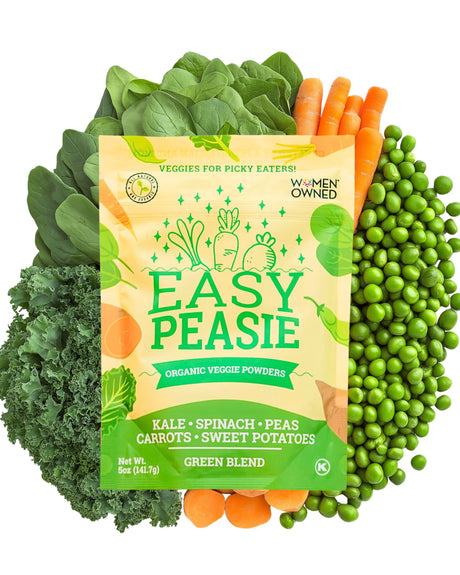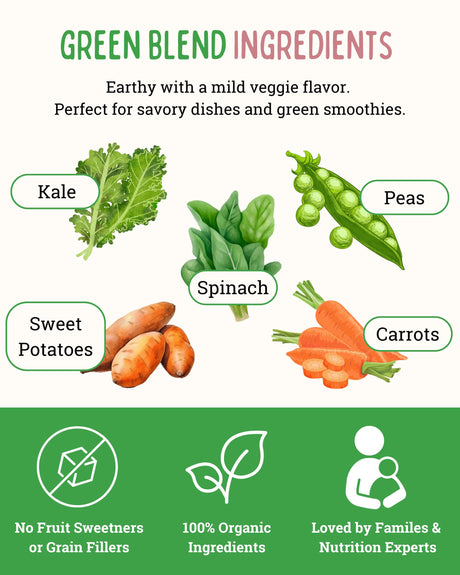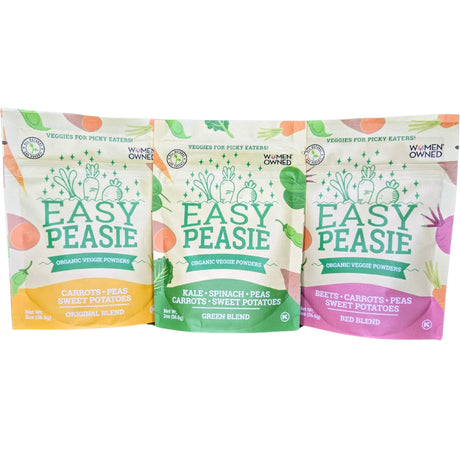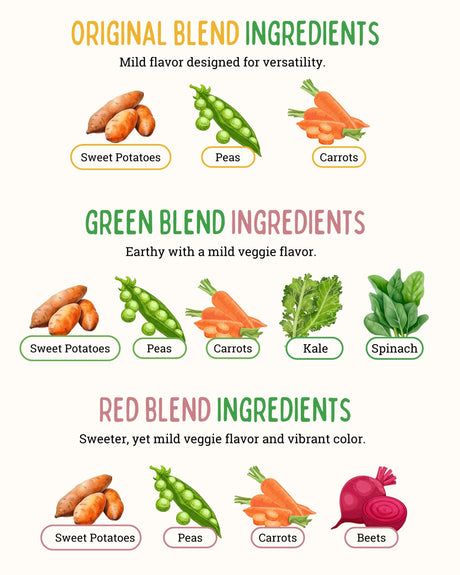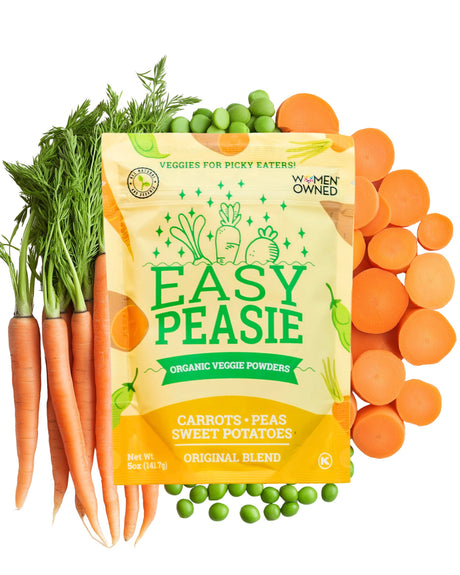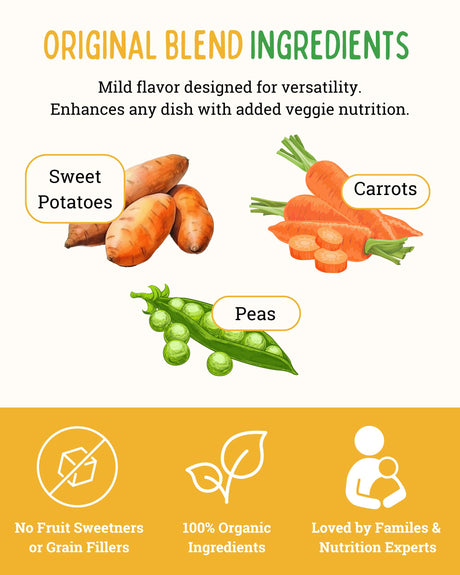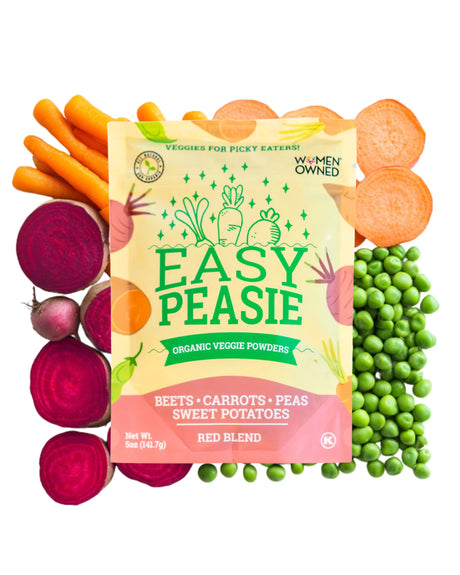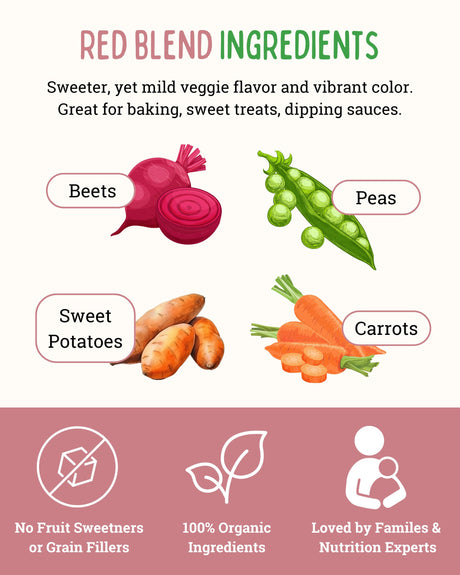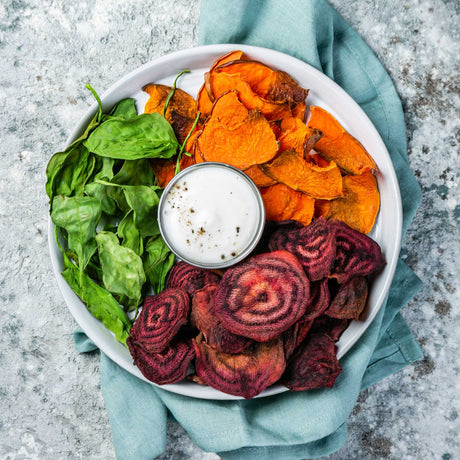Every parent has faced the challenge: the untouched plate of greens, the wrinkled nose at the sight of broccoli, the subtle push of the plate away. Ensuring our children receive the right nutrients is a top priority, but the journey is often fraught with culinary battles. The solution? Hidden veggies. This strategy seamlessly blends nutrition with taste, ensuring every meal is both delightful and health-packed.
The Importance of Vegetable Nutrition for Kids
Vegetables: Nature's Powerhouse: Vegetables are more than just food; they're a symphony of nutrients. Each vegetable, with its unique color and shape, is a powerhouse of essential vitamins, minerals, and fibers. From the vibrant red tomatoes packed with lycopene to the leafy greens bursting with iron and calcium, every vegetable offers a unique set of benefits. They are nature's multivitamins, tailor-made to ensure our children grow up with robust health and vitality.
Setting the Foundation for a Healthy Future: A child's body is in a constant state of growth and development. The nutrients they consume play a pivotal role in determining their overall health, both now and in the future. Introducing a vegetable-rich diet early on provides immediate health benefits and lays the foundation for long-term wellness. It's about teaching our children the value of nutrition and setting them on a path to a healthier adulthood. Moreover, a diet rich in vegetables can help combat common childhood issues like obesity, weak immunity, and attention disorders.
The Lifelong Benefits of a Veggie-Rich Diet: Beyond the immediate health benefits, a diet rich in vegetables sets the stage for lifelong health. Children who consume a balanced diet with ample vegetables are less likely to suffer from chronic diseases in adulthood, such as heart disease, diabetes, and certain cancers. Furthermore, these children often grow up to be adults who make healthier food choices, ensuring that the cycle of good health continues.
The Art of Disguising Vegetables
The Magic of Camouflage: The key to getting kids to eat their veggies lies in the art of camouflage. It's about incorporating veggies into dishes they already love, enhancing the dish's nutritional value without compromising on its taste or appearance. But it's not just about hiding; it's about integrating. It's about making vegetables a seamless part of the meal, so much so that their presence becomes natural.
Balancing Taste and Nutrition: While it's essential to sneak in those veggies, it's equally crucial to ensure the dish remains as delicious as ever. After all, we don't want our little ones getting suspicious, do we? The challenge lies in striking a balance. It's about ensuring that the added vegetables enhance the dish rather than overpowering it. This requires a deep understanding of flavors and how different ingredients interact with each other.
The Role of Spices and Herbs: One of the best ways to mask the taste of vegetables is by using spices and herbs. Ingredients like garlic, basil, oregano, and cumin can transform a dish, making the vegetables blend seamlessly. Not only do they enhance the flavor, but they also add their own set of health benefits.
Sneaky Recipe Ideas
Veggie-Packed Pasta Sauce: Imagine a rich, tangy tomato sauce, but with a twist. By blending in carrots, bell peppers, and spinach, you not only enhance its nutritional profile but also add a delightful sweetness that complements the tomatoes. The carrots add a subtle sweetness, the bell peppers a slight tang, and the spinach a touch of earthiness. Serve it with whole grain pasta, and you've got a meal that's both delicious and health-packed.

Hidden Veggie Meatballs or Burgers: Meatballs and burgers are comfort foods. Now, what if we told you that you could make it even better? By mixing in finely grated zucchini, mushrooms, and onions, you add moisture, flavor, and a ton of nutrients. The zucchini adds a refreshing touch, the mushrooms a meaty texture, and the onions a hint of sweetness. Serve with a side of homemade tomato sauce, and you've got a winner!
Veggie-Infused Smoothies: Smoothies are a favorite, especially during those hot summer months. Now, add a nutritional punch by blending in spinach, kale, or beetroot. The natural sweetness of fruits like bananas, strawberries, or blueberries masks the taste of the veggies, making it a hit with the kids. Plus, the vibrant colors make it visually appealing, making kids more likely to give it a try.
Vegetable Pancakes or Fritters: Breakfast times just got healthier! Use vegetables like sweet potatoes, corn, and peas as the primary ingredients for pancakes or fritters. Add some herbs and spices, and you've got a breakfast that's as nutritious as it is delicious. The sweet potatoes add a creamy texture, the corn a delightful crunch, and the peas a touch of sweetness.
Veggie-Loaded Muffins: Muffins are a treat, but with a little creativity, they can also be a health powerhouse. By incorporating pureed pumpkin, carrots, or zucchini into the batter, you add moisture, natural sweetness, and a lot of nutrients. The pumpkin gives it a warm, earthy flavor, the carrots a hint of sweetness, and the zucchini a touch of freshness.
Creamy Veggie Popsicles: Blend together avocado, spinach, and some sweet fruits like mango or pineapple. Pour the mixture into popsicle molds and freeze. The result is a creamy, sweet treat that's packed with nutrition.
Veggie and Cheese Quesadillas: Mix finely chopped spinach, bell peppers, and corn with some cheese. Spread this mixture between tortillas and grill. The melted cheese will make the veggies irresistible.
Vegetable-Stuffed Pizzas: Make a regular pizza but blend some steamed cauliflower or broccoli into the pizza sauce. Top with their favorite toppings. They'll never guess they're eating veggies with every bite!
Veggie Rice or Quinoa: Cook rice or quinoa as usual but add some finely chopped veggies like carrots, beans, and peas. The colorful dish will be appealing, and the grains will absorb the flavors of the veggies.
Veggie-Infused Omelet or Scramble: Whisk eggs with some milk, salt, and pepper. Add finely chopped veggies like bell peppers, tomatoes, spinach, and mushrooms. Cook to make a fluffy omelet or scramble.
EasyPeasie Veggie Blends: A Convenient Solution
In our busy lives, we're always on the lookout for shortcuts, especially when they don't compromise on quality. EasyPeasie Veggie Blends offer just that. Made from natural ingredients with no additives, they're a versatile addition to any meal. Whether it's sprinkling some on your pizza, mixing it into your pasta sauce, or even adding a spoonful to your morning smoothie, it ensures your child gets their daily dose of veggies without a fuss.
Tips for Introducing Hidden Veggie Dishes to Kids
Start Slow and Steady: Introducing hidden veggies is a marathon, not a sprint. Begin by adding a small amount of veggies to familiar dishes. As your child gets accustomed to the taste, gradually increase the vegetable content. This ensures a subtle transition, making the new flavors more palatable and less detectable.
Make Mealtime Fun and Interactive: Turn the dining table into a stage for culinary adventures. Use cookie cutters to shape veggie patties into fun shapes or create a story around the dish, where each ingredient plays a character. The more engaging the meal, the more intrigued they'll be to try it.
Involve Them in the Cooking Process: Children are more likely to eat something they've had a hand in making. Allow them to wash the veggies, stir the pot, or even press the blender's button. This involvement gives them a sense of ownership and pride over the dish, making them more inclined to taste their creation.
Pair with Favorite Foods: If your child has a favorite dish or side, use it to your advantage. Introduce the veggie-infused dish alongside their favorite food. The familiar taste can act as a comforting bridge to the new flavors.
Stay Positive and Avoid Pressure: It's essential to approach the process with a positive attitude. Celebrate small victories, like when they take a bite or finish a portion. Avoid turning meal times into a battleground. If they resist, don't force them. Instead, try again another day with a different approach.
Experiment with Textures: Sometimes, it's not the taste but the texture that's off-putting. If they don't like a pureed spinach sauce, they might enjoy spinach finely chopped and sautéed. Experiment with grating, blending, or finely chopping to find a texture they prefer.
Educate and Empower: As they grow older, start educating them about the benefits of the veggies they're eating. Knowing that carrots are good for their eyes or spinach makes them strong can be motivating. Turn it into a fun fact session, making them feel empowered with their food choices.
Consistency is Crucial: It's natural to face resistance initially. But don't get disheartened. Consistency is key. The more frequently they're exposed to a particular veggie or dish, the more familiar it becomes, increasing the likelihood of acceptance over time.
Seek Feedback: After the meal, ask them what they thought of the new dish. If they liked it, great! If not, ask them what they didn't like. Was it too spicy? Too bland? Use their feedback to adjust and improve.
Final Thoughts
The journey to ensuring our kids eat their veggies might be filled with challenges, but with a bit of creativity, persistence, and a whole lot of love, it's a rewarding one. Here's to delicious meals, happy taste buds, and the unparalleled joy of seeing our children grow up healthy and strong.
Additional Resources
For those looking to delve deeper, there are numerous resources available. Books like "The Sneaky Chef" by Missy Chase Lapine offer a treasure trove of recipes and tips. Websites like HiddenVeggies.com provide a platform for parents to share their experiences, challenges, and victories. Join the community, share your stories, and let's make mealtimes fun!


